Reports
North Korean Reprocessing Campaign May Have Taken Place
by David Albright and Sarah Burkhard
June 5, 2018
The reprocessing campaign for irradiated fuel from the 5 megawatt-electric (MWe) reactor at Yongbyon may have occurred during the last several months and may have been completed. Recent satellite imagery from May 28, 2018 purchased by the Institute indicates that the coalfired thermal plant, which supplies steam for operations at the Radiochemical Laboratory, was operational in May. A May 6, 2018 DigitalGlobe image analyzed by 38North shows newly filled coal stockpiles outside the coal-fired thermal plant and light smoke being released from the smokestack.1 We agree with 38North’s conclusion that these visible activities were likely part of a reprocessing campaign. In the Institute’s May 28th imagery, the majority of the coal seems to have been removed from the piles. Since the recent imagery shows no major signs of current activity at the coal plant, such as smoke coming from the stack, we conclude that the reprocessing campaign may have ended or been completed. The Radiochemical Laboratory, where the separation of plutonium from spent fuel occurs, also shows no visible signs of current activity. Construction activity appears to continue at the Experimental Light Water Reactor (ELWR) and on the 5 MWe reactor’s secondary cooling system. No major activity is observed around the abandoned 50 MWe reactor, the suspect fuel fabrication plant, the fuel fabrication facility, or the suspect isotope separation facility. Overall, North Korea appears to continue its usual activities at Yongbyon, while diplomats on both sides prepare for the upcoming U.S.-North Korea summit scheduled for June 12, 2018.
Coal-fired Thermal Plant
Figure 1, a recent DigitalGlobe image acquired by the Institute, shows the coal-fired steam generation plant at Yongbyon, which, via an above ground pipeline, supplies the Radiochemical Laboratory with steam. The plant seems to have been active in May, since at the beginning of May, a small exhaust plume was observed coming from the smokestack, and at the end of May, coal stockpiles outside the plant seem significantly reduced (figure 1). The most recent imagery shows no signs of current activity, which indicates that the operational period may have ended.
Radiochemical Laboratory
The Radiochemical Laboratory is where North Korea chemically processes discharged irradiated fuel from the 5 MWe reactor and separates plutonium for nuclear weapons. The steam from the thermal plant is used for waste processing activities following the separation of plutonium from irradiated fuel. Figure 2 shows no major current visible activity at the Radiochemical Laboratory, which indicates that the reprocessing campaign may have ended. The Institute estimates that North Korea could have separated enough plutonium during this campaign for a few to several nuclear weapons.
5 Megawatt-Electric Reactor and Experimental Light Water Reactor
Figure 3, a May 28, 2018 commercially available satellite image, gives an overview of the site hosting the two reactors. The riverbed of the Kuryong river has changed significantly over the past months, as documented by several Institute satellite imagery reports. It has become more and more evident that the recent changes were undertaken by North Korea to improve the secondary cooling systems for both the ELWR and the 5 MWe reactor. Figure 3 shows the probable ELWR pump house for which river access was broadened, and an earthen dam and a weir which are likely designed to channel water flow and control water levels by the pump house. Construction further upstream around the 5 MWe reactor water discharge pipe is on-going, but it appears that North Korea is building a pump house similar to the one for the ELWR (see figure 3 and 4). Figure 4 shows more clearly that North Korea is broadening river access to the building and is possibly working on piping connecting the new construction to the 5 MWe reactor. Some piping leading from the 5 MWe to the river was already in place, where, in the past, water discharge into the river was observed.2
Minor activity around the 5 MWe reactor building can also be seen.
Outside the ELWR’s main entrance, where construction has been occurring, the exterior of a new building seems almost complete (see figure 5).
Additional Sites to be Observed
Only minor activity is observed around the abandoned 50 MWe reactor (see figure 6), suspect fuel fabrication plant (also figure 6), fuel fabrication facility (figure 7), and suspect isotope separation facility (figure 8).
Figure 1. Compared to a May 6, 2018 DigitalGlobe image published and annotated by 38North, it appears that coal at the coal-fired thermal plant has been fully or partially removed from the individual stockpiles. No smoke is coming from the stack, indicating that the reprocessing campaign may have ended or been completed. The coal-fired plant supplies steam for operations at the Radiochemical Laboratory where reprocessing occurs.
Figure 2. The Radiochemical Laboratory shows no major signs of activity.
Figure 3. A recent satellite image indicates that the changes made at the Kuryong river bed likely serve the purpose of improving the two reactors’ cooling systems.
Figure 4. Construction around the 5 MWe water discharge pipe is on-going and seems to serve the addition of a pump house.
Figure 5. A new building added outside the ELWR’s main entrance seems to be near external completion.
Figure 6. Trees seem to have been cleared around a possible waste water pond near the suspect fuel fabrication plant.
Figure 7. The fuel fabrication facility hosts the main centrifuge building.
Figure 8. The suspect isotope separation facility shows no major signs of activity.
1. Frank V. Pabian, Joseph S. Bermudez Jr. and Jack Liu, “North Korea’s Yongbyon Nuclear Research Center; Possible Preparation for Reprocessing Campaign in Early May?,” 38North, May 30, 2018, https://www.38north.org/2018/05/yongbyon053018/ ↩
2. See, for example, David Albright, Serena Kelleher-Vergantini, William Baker, and Won Gi You, “Activities Detected at North Korea’s Yongbyon Nuclear Site,” Institute for Science and International Security, August 6, 2014, http://isis-online.org/isis-reports/detail/activities-detected-at-north-koreas-yongbyon-nuclear-site/10 ↩

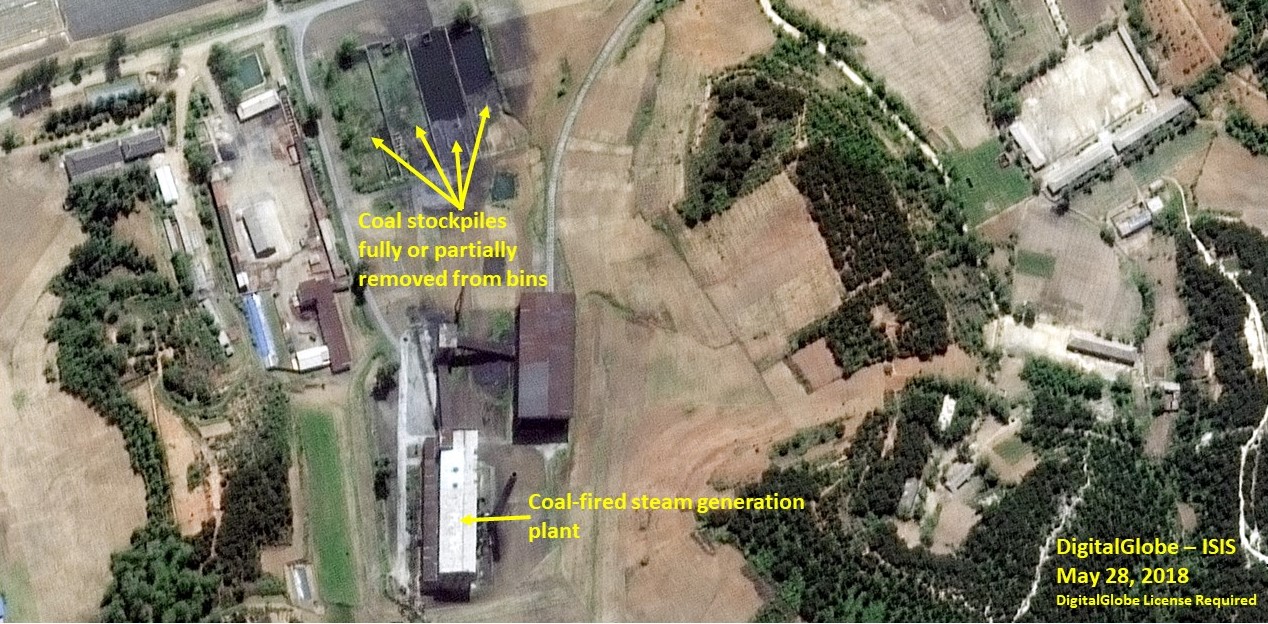
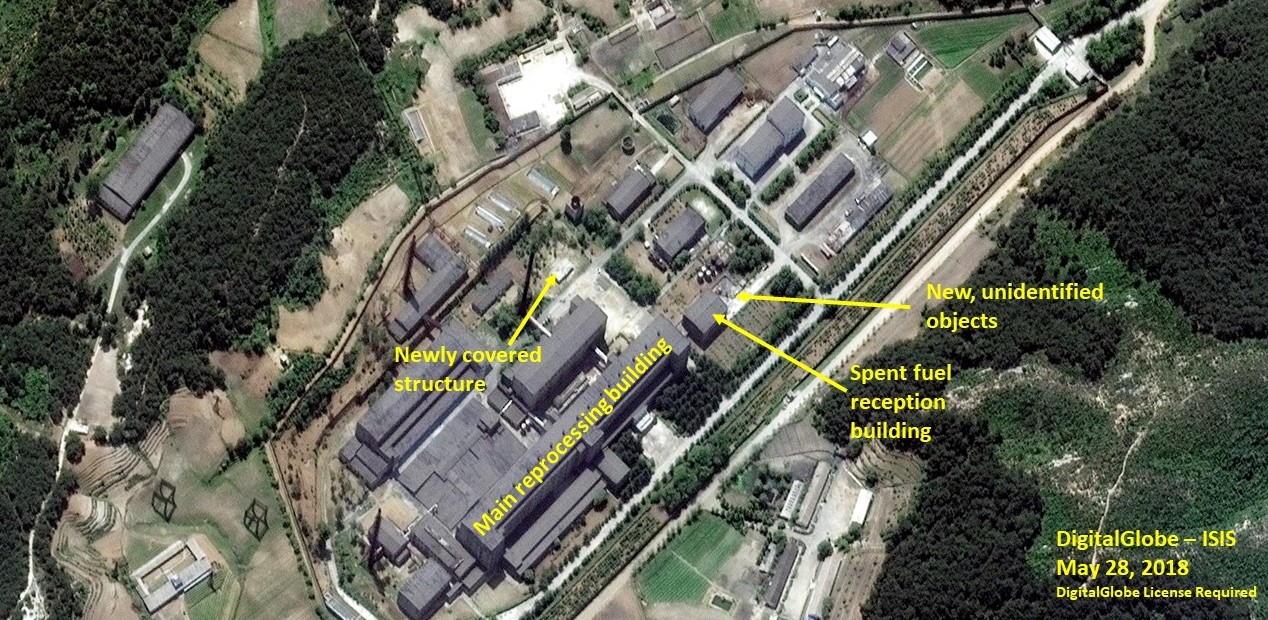
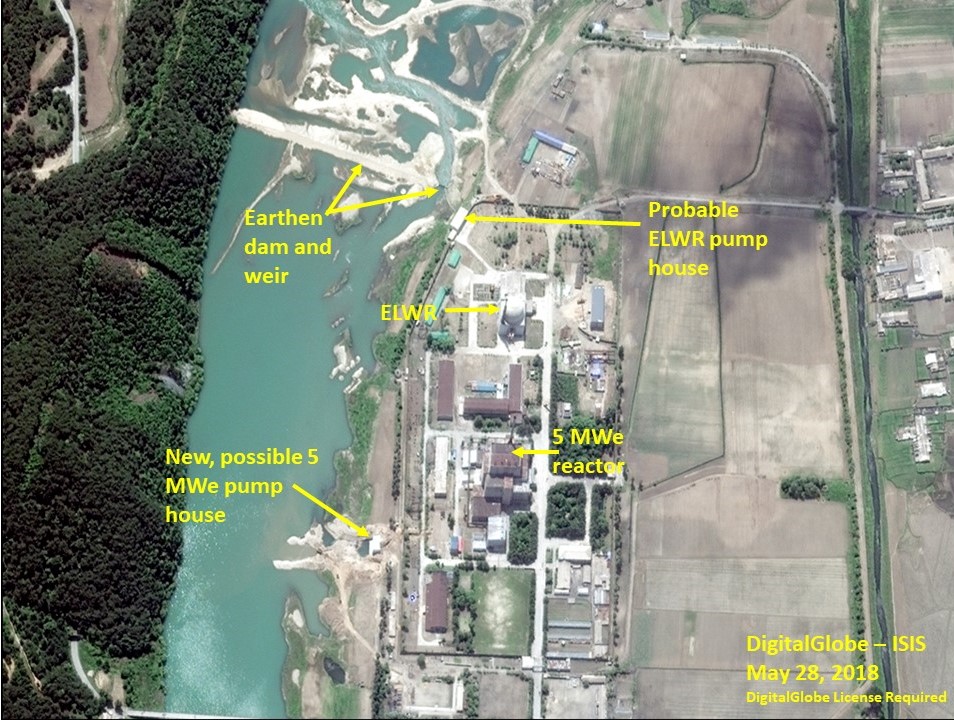

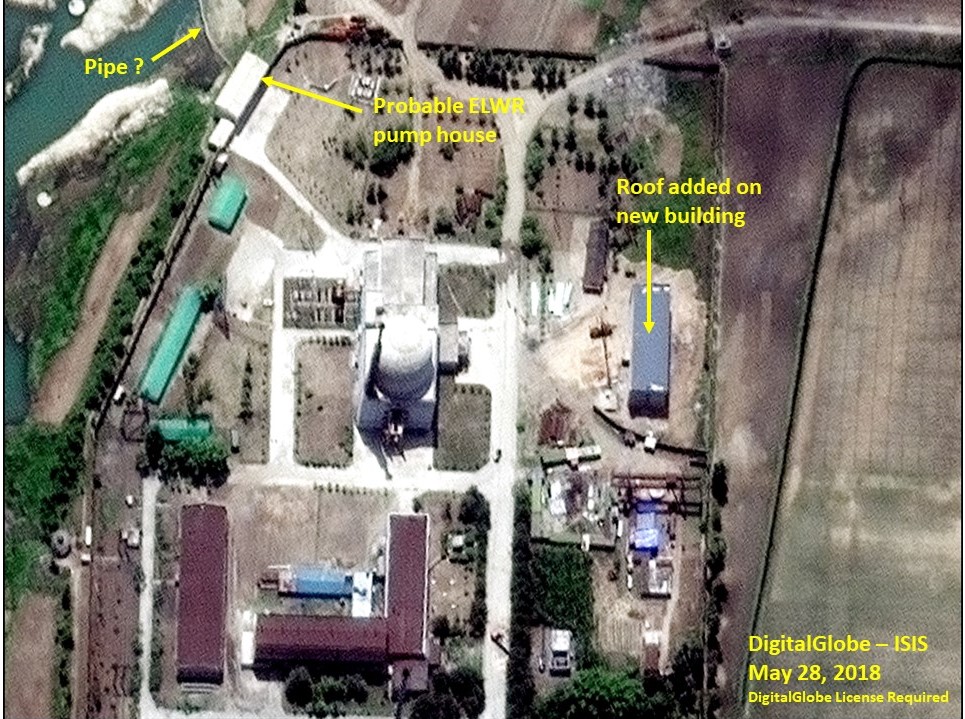


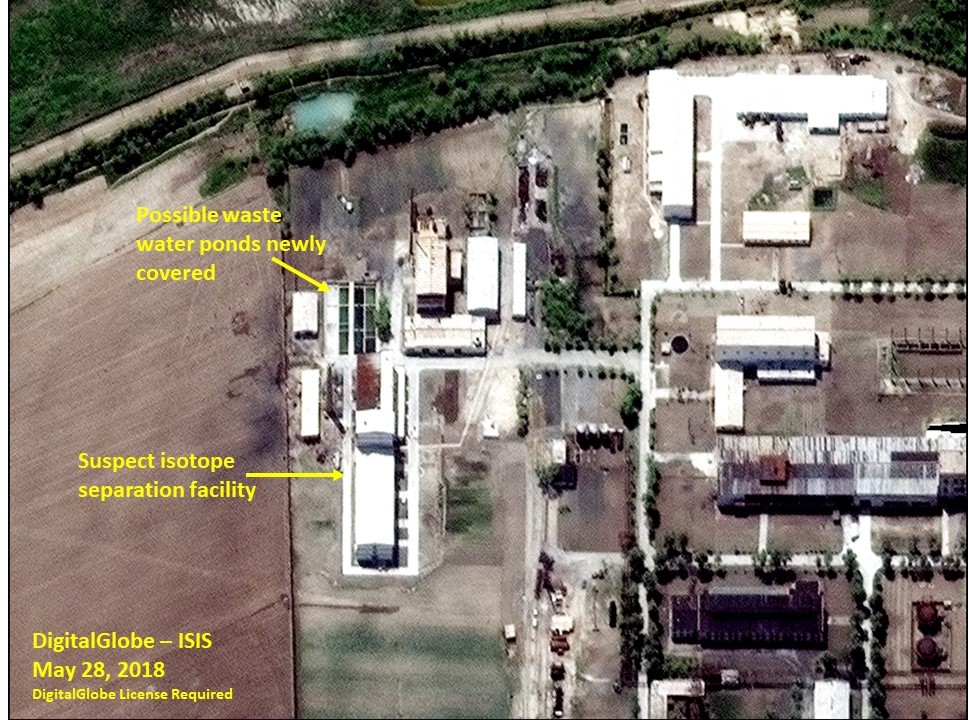
 twitter
twitter